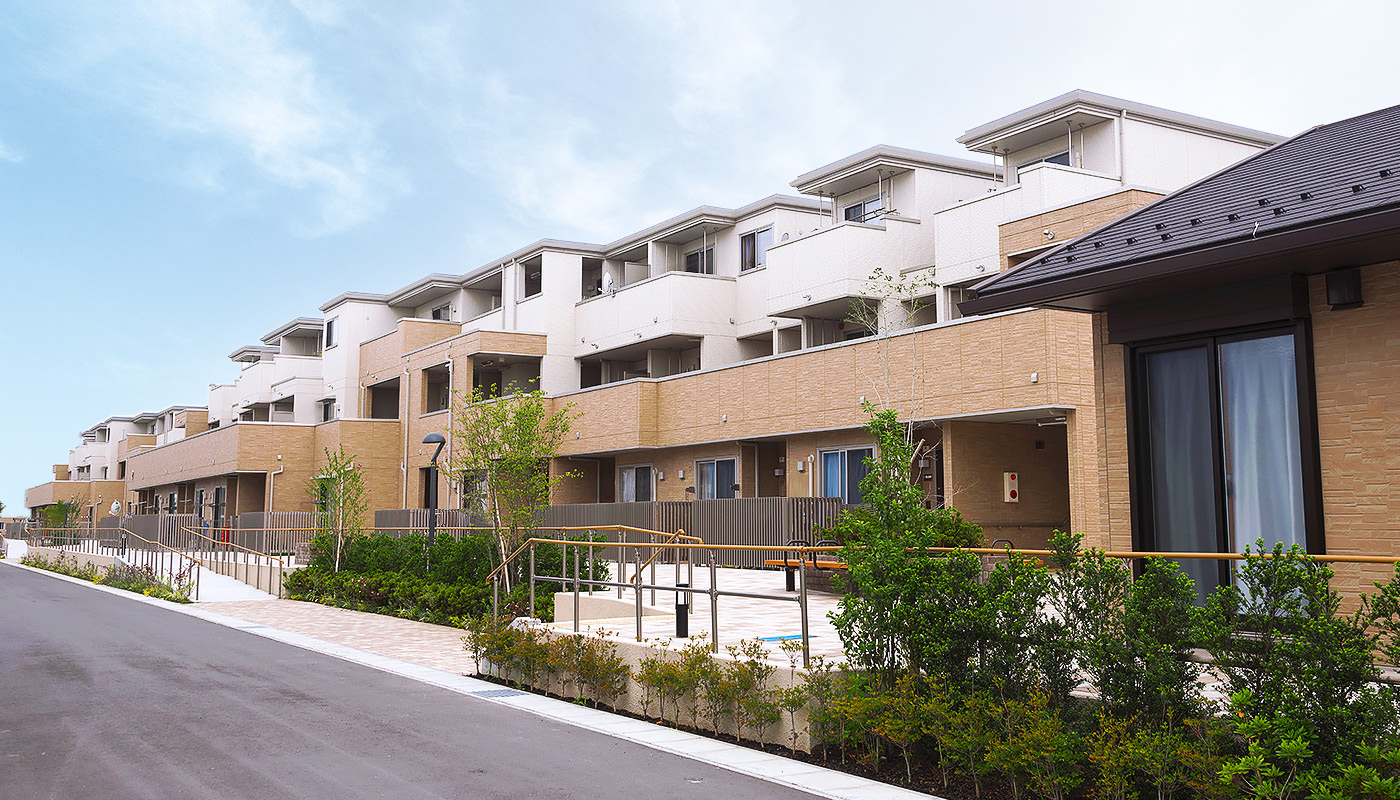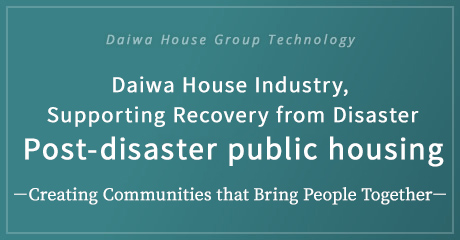
Public housing that assists in recovery after a disaster, also known as “post-disaster public housing,” gives people a low-rent alternative after they have lost their home due to disaster. Indispensable to recovery is permanent housing, but when the Great East Japan Earthquake hit, there were delays to construction, and prior to that, following the Great Hanshin-Awaji Earthquake there was the troubling issue of solitary deaths. Daiwa House Industry is working to find solutions to such important issues by swiftly providing public housing after a disaster and revitalizing communities.
Continuing from the Great East Japan Earthquake, which destroyed more than 400,000* dwellings, there has been a steady stream of disasters in Japan, including the Kumamoto Earthquake, torrential rains in western Japan, and intense rainfall in July 2020.
Daiwa House Industry has been committed to the construction of emergency temporary housing since immediately after the Great East Japan Earthquake, and a year after
At the time, construction stalled due to difficulties local governments had in securing land for the project. Under such circumstances, Daiwa House Industry proposed an unprecedented scheme for reconstruction public housing in which a private company would carry out the entire process from land procurement and land development to housing construction, and then have the local government repurchase the land. This proposal, which drew on our unique land utilization know-how and experience in housing and urban development, was adopted, and construction subsequently proceeded at an accelerated pace.
- *From Fire and Disaster Management Agency’s “Tohoku-Pacific Ocean Earthquake (Great East Japan Earthquake) Damage Report” (March 1, 2022)
Post-disaster public housing
(Great East Japan Earthquake, Kumamoto Earthquake, torrential rains in western Japan, and intense rainfall in July 2020)
Construction and adoption results: 3,547units
- *As of May 2022
- *Daiwa House Industry
Another issue was community revitalization. Post-disaster public housing is where people who find themselves away from where they had lived can build new relationships. With the Great Hanshin-Awaji Earthquake, the difficulties of housing and a population becoming ever more elderly gave rise to the social issue of solitary deaths. How could we smoothly build new communities and improve the quality of life? Daiwa House Industry has created a variety of ingenious post-disaster public housing with the aim of creating good communities.
 Facilitating “conversations” within and outside the home
Facilitating “conversations” within and outside the home
- Feature
- Normally, in condominiums, public housing and other apartment housing, private rooms are situated on the pathway for use by all residents, and the living room is at the far end of the building as seen from the entrance. Contrary to this, Daiwa House Industry’s proposal for “easy-access living room-type units” positions the living room on the side of the common pathway.
- Objective
- People in the living room and people walking down the pathway can casually greet one another, saying, “How are you?” and “What are you doing?” which naturally creates relationships among neighbors.
 Creating diverse “spaces” between buildings
Creating diverse “spaces” between buildings
- Feature
- To harmonize with the neighborhood, even in an area with an abundance of detached houses, rather than have one large-scale building, there are numerous small-scale houses. The small, segmented residential buildings are staggered and arranged in a “flock of geese” pattern.
- Objective
- Expressive streetscapes are created with consideration for ventilation, sunlight, sight lines, and privacy between residential buildings. Moreover, a variety of spaces where people can interact can also be formed, including a small “hangout space” for relaxation, and a backyard “utility yard” with storage, outdoor workspaces, and sinks.
 Creating “vitality” on streets where people come and go
Creating “vitality” on streets where people come and go
- Feature
- Pedestrian “pathways” are installed that lead from the front road into the site. This links to “residential units and private gardens” and “paths” leading to plazas, parking lots, and utility yards, and other elements of the easy-access living room concept,
- Objective
- The goal is for residents’ lives to be casually connected to one another, fostering a community by encouraging interaction such as daily greetings and friendly conversation—a place where a lively atmosphere is created.
 Cultivate an attachment to the “beauty of our home”
Cultivate an attachment to the “beauty of our home”
- Feature
- The finishes and colors of the adjacent units can be changed while maintaining overall harmony. In addition, we are greening site boundaries, pathway spaces, and plazas after discussing with government authorities.
- Objective
- The “townscape” is not a uniform landscape, but rather a collection of individual “houses.” The abundant greenery adds color to the environment and makes it an even more attractive and favorable living environment.
The origin of Daiwa House Industry is the “Pipe House,” which was developed for people who had lost their homes in a devastating typhoon. Over the half century since then, we have evolved our technological and design capabilities, leading to the development of such products as xevoΣ (xevo sigma), a house that that stands up well to repeated earthquakes.
By facing various natural disasters head-on, the Daiwa House Group has been able to find solutions to challenging issues while engaging in community recovery. However, even today, over a decade after the Great East Japan Earthquake, disasters are still a common occurrence. There is still a great deal more that the Daiwa House Group can do in the future.


